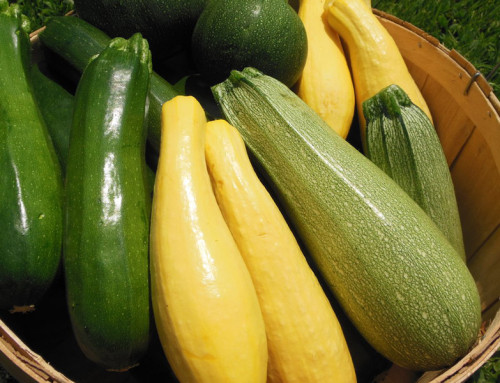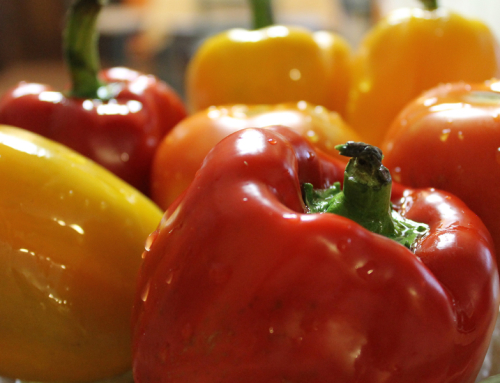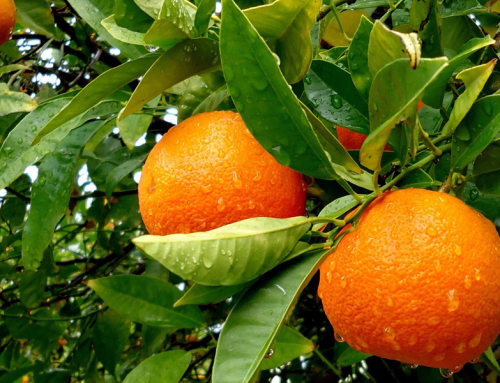What exactly IS a medium-sized apple?
- The US Apple Association describes it as being 5.5 ounces or 154 grams with 80 calories.
- The USDA describes it as 6.42 ounces or 182 grams with 95 calories, but they also state that the “typical” apple serving weighs 8.5 ounces or 242 grams with 126 calories.
So in order to answer “how many calories in an apple”, you need to weigh your apple and go by actual weight, not by “small, medium, or large” designations.
Let’s break a fresh apple down into its component parts and then the confusion may start to make some sense.
A peeled apple will have less calories, less fiber and less vitamins. Ditto an apple that has had the core removed, so keep the peel on for maximum health benefits, and eat the edible core rather than wasting it. Yes, the core IS edible, and you’ve eaten it many times without complaint.
Core
Have you ever noticed that when you slice a whole, uncored apple, the only thing you tend to pluck out are the seeds? You really don’t notice the core in the apple slice and you’re happily eating the whole thing. So, why are you throwing the core away when you eat an apple whole? The core contains the rest of the apple’s fiber component and a few more trace phytonutrients, so don’t waste it! (I even eat the fuzzy thing on the bottom, and tiny portion of the stem that’s left after I twist the larger stem off)
Also, it’s ok to eat an occasional apple seed with your core. The seeds weigh about .07 grams, contain significant amounts of oils, potassium and magnesium and are high in protein. However, they also contain amygdalin, (also known as vitamin B17 or Laetrile), a molecule that produces cyanide once ingested that actually fights cancer cells. Cyanide is only a problem if you get too much of it by chewing up a lot of seeds, and then the seeds can be toxic to the point of being fatal. So, there’s no need to panic over the occasional swallowed seed since It will probably pass right through your digestive tract, totally intact, anyway. So, go ahead and eat the core, either with or without the seeds.
Skin
People often peel apples, but they are removing a lot of the health benefits by doing so. They believe the skin has pesticides on it, which may or may not be true. Apples are also coated in a natural wax right off the tree, but they are also sprayed with a food grade wax (usually carnauba) to make them look shiny and appetizing in the supermarket. It is meant to be eaten with the apple, just like you eat the casing with the sausage. Washing your apples before eating is always a good idea, and even wiping them with vinegar removes the wax, so these issues are alleviated. Buying organic apples solves both issues completely, so eat the skin.
Just the peel itself from a medium-sized, raw apple contains 18 calories, 4.59 g of necessary carbohydrates, two-thirds of the fiber, 50% of the vitamin C, along with trace amounts of protein and fat. Rutin, an antioxidant, is also in the skin and can protect your body from cell damage, inflammation and blood circulation problems, so eat the skin!
Just for the record
Apples float because at least 20% of their mass is nothing but air, and 80% is nothing but water. Water (H2O) contains oxygen. So. if you take away the skin and the core, you’re not left with much of a healthy meal after all, just the sugar is all that’s left.
For dehydrated apples, the drying process increases the sugar concentration by decreasing the water content, but the calories remain the same. However, the manufacturer usually adds sugar which increases the calories per ounce, and you really don’t know what variety, or size, was used, and most have been peeled before processing. Solution? Dry your own unpeeled apples. That way you know exactly what the calories are for the size of apple you used, as well as how many slices make up a complete apple, because you cut them yourself.
- No sodium
- No cholesterol
- No fat
- No artificial colors, flavorings or preservatives
- The nutrients in apples comprise 3% fiber, 96% carbohydrate, 1% protein and the rest is trace elements, minerals, vitamins and oils. Again, if you are doing the math, fiber is a form of carbohydrate. Diabetics subtract the amount of fiber grams to get the true carbohydrate count for their diets.
- Apples provide boron, an essential trace element that helps harden bones which helps prevent osteoporosis.
- Apple polyphenols (phytonutrients) can help prevent spikes in blood sugar, and aids in regulating it. Flavonoids, like quercetin, can inhibit the enzymes that are involved in breaking down complex carbohydrates into simple sugars. Apple polyphenols have also been shown to lessen the absorption of glucose from the digestive tract; to stimulate the pancreas to secrete insulin; and to increase the uptake of glucose from the blood.
- Whole apples contain 2-3 grams of fiber per 3.5 ounces with fat-soluble pectin accounting for less than 50%, which can significantly lower many of our blood fats.
- Whole apples provide better satiety, or food satisfaction, than applesauce or apple juice. This is due to all the water in a fresh apple that fills you up more quickly and its fiber content, which is broken down by cooking to make applesauce and eliminated completely in juice.
- Eating one medium-sized apple approximately 15 minutes before a meal, has been shown to cut caloric intake at that meal by an average of 15% because of the apple’s satiety ability.
- Several anti-cancer studies show that eating apples daily can provide better anti-cancer benefits than eating only occasional apples. So, maybe grandma was right? “An apple a day keeps the doctor away!”












